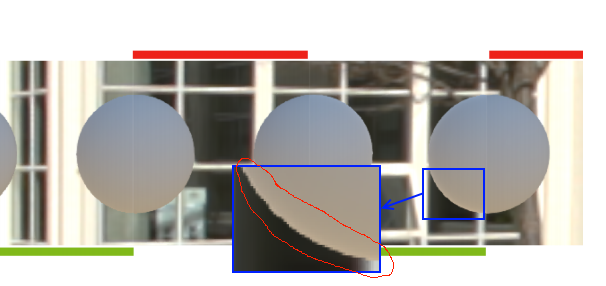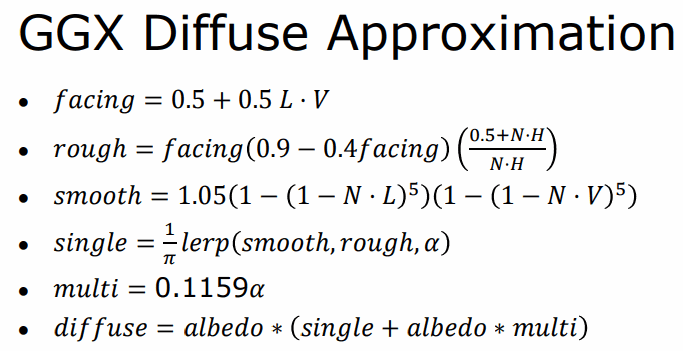Hello, I'd like to ask your take on Lagarde's renormalization of the Disney BRDF for the diffuse term, but applied to Lambert. Let me explain.
In this document:
https://seblagarde.files.wordpress.com/2015/07/course_notes_moving_frostbite_to_pbr_v32.pdf
(page 10, listing 1) we see that he uses 1/1.51 * percetualRoughness as a factor to renormalize the diffuse part of the lighting function. Ok.
Now let's take Karis's assertion at the beginning of his famous document:
http://blog.selfshadow.com/publications/s2013-shading-course/karis/s2013_pbs_epic_notes_v2.pdf
Page 2, diffuse BRDF:
Quoteany more sophisticated diffuse model would be difficult to use efficiently with image-based or spherical harmonic lighting
I think his premise applies and is enough reason to use Lambert (at least in my case).
But from Lagarde's document page 11 figure 10, we see that Lambert looks frankly equivalent to Disney.
From that observation, the question that naturally comes up is, if Disney needs renormalization, doesn't Lambert too ?
And I'm not talking about 1/π (this one is obvious), but that roughness related factor.
A wild guess would tell me that because there is no Schlick in Lambert. and no dependence on roughness, and as long as 1/π is there, in all cases Lambert albedo is inferior to 1, so it shouldn't need further renormalization. So then, where does that extra energy appear in Disney ? According to the graph, it's high view angle and high roughness zone, so that would mean, here: (cf image)

This is super small of a difference. This certainly doesn't justify in my eyes the need for the huge darkening introduced by the 1/1.51 factor that enters in effect on a much wider range of the function. But this could be perceptual, or just my stupidity.
Looking forward to be educated ![]()
Bests









